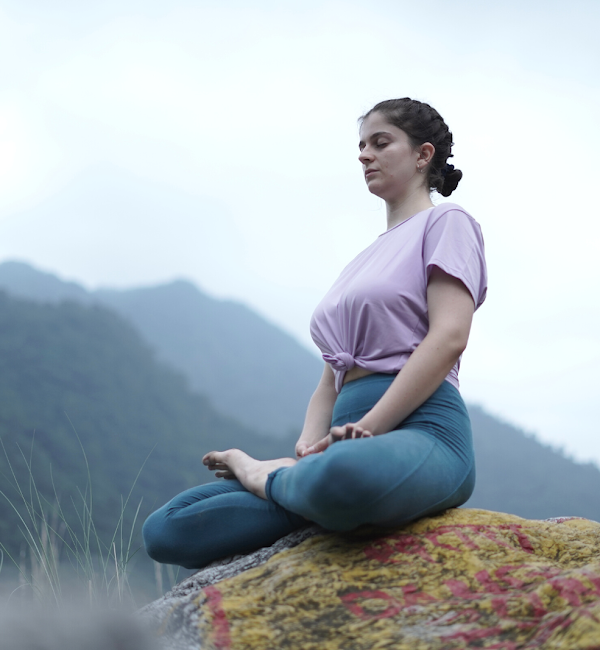Everything You Need to Know About Depression
Every person enters a phase of life, where depression sets in. However, depression is one stage ahead of sadness, to be precise. But do you know, that there is a thin line between sadness and depression. You can call depression, a mood disorder. Moreover, it is supposedly a part of psychology. You may feel sadness, loss, or anger. The worst part is, such feelings interfere with day-to-day activities.
You may feel confused at times, while understanding the subtle difference between depression and sadness. You may feel grief after you lose a loved one. It can also occur after a trauma.
However, you can become self-destructive, if you are depressed. In grief, you would never loathe yourself. When you are sad, you will recall both happy as well as sad emotions.
However, in most mental depressive disorders, you will give precedence to the sad moments. However, not everybody shows the same symptoms of depression. It can interfere with daily chores, and result in loss of productivity at times.
You may be baffled to know, that people suffering from some other diseases, might feel an increase in the related symptoms, due to depression. Some of the diseases, that you should know about include arthritis, heart ailments, cancer, obesity, and so on. It is quite simple to understand, why it is so. When you are depressed, you will stop self-care and the underlying diseases also start proliferating.
Read More: Why Is Kundalini Yoga Dangerous? The Truth About Its Risks and Rewards
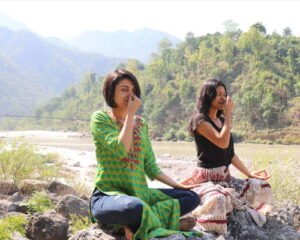
Various Causes of Depression
There are a variety of factors that cause depression. They are as listed below:
- Abuse – Constant abuse can lead to a feeling of dissatisfaction amongst individuals. It is not just limited to physical abuse, but emotional abuse, and sexual abuse are also to be blamed. That is the reason, why you will notice victims of such crimes displaying mental disorders. Many children who undergo abuse at the hands of their parents, often develop depressive symptoms later on in life.
- Conflict – If a person lives in an environment, where there is a lot of conflict, then there are high chances for such individuals to develop depressive disorders. Conflicts are of various types again. If you want to unearth the reasons behind depression, you ought to understand what conflict is all about. A conflict can involve legal hassles, where lawyers, and big money is involved. Moreover, it can also lead to financial hardships. Thus, it leads to conflict. When some parties make an unreasonable demand, it can lead to conflict. Conflict can change your views of the world. But some people might have a problem, accepting new changes. So, conflicts affect the mental state in such an instance.
- Death – When a loved one, or a pet dies, it can lead to depression. Some people also consider themselves, to be responsible for the death, and it multiplies the depressive symptoms.
- Gender-Women are more likely to feel depressed. It is because many homemakers stay at home all day, and are unable to share their grief with others. Whereas, men in work outside and mingle with peer group more often. Moreover, men can channelize their emotions with the help of addiction, so they feel at ease.
- Serious Illness – According to reports, one-third of the population suffering from serious illness, also have depressive symptoms. It is very normal to feel sadness and depression, after a life-changing experience of this stature. This is more apt for chronic illnesses, that are not curable completely. Some of the chronic illnesses, that people suffer from are, diabetes heart disease, arthritis, kidney disease, HIV, Lupus, and sclerosis to name a few. All those individuals who suffer from chronic illness, have to make serious changes in their lifestyle. It can be a challenging situation, where a person’s mobility may also be impacted. Stress arising out of such a situation mainly causes depression.
- Substance Addiction – It is a long-known fact, that substance abuse and mental illness are inter-related. However, you may not know that this is a two-way thing. Many people give in to addictions to get a high. But after the effects of the drugs have worn off, a feeling of sadness and remorse resides in the minds of the individual. Most people who are affected by both lose interest in activities, lose appetite, and also lack energy. So, it is a vicious cycle, that affects such people.
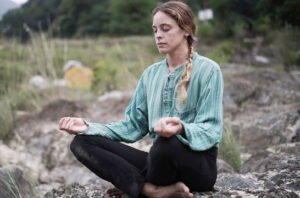
What Are The Types Of Depression?
Every person feels sad once in a while, but when this becomes regular, the problem aggravates. You may hear the term clinical depression associated with it. You can treat clinical depression with medicine, therapy, and lifestyle changes.
However, different depressive symptoms require different kinds of intervention. You need to identify the types of depression, to understand the treatment modality. Some life events cause depression, while some chemical interventions may also cause depression. Learn about the various types of depression here:
- Major Depressive Disorder – If you hear the term clinical depression, the doctor is actually referring to major depressive disorder. It is mainly characterized by a few features like depressed mood, changes in weight, obesity, fatigue, feelings of worthlessness, and suicidal thoughts.
- Persistent Depressive Disorder – Dysthymia is another name for it. It is also another type of chronic depression, which is present for around two years or so. You can observe mild, mediocre, as well as severe symptoms. You might find patients showing no depression at all, at certain times. Such patients are very unpredictable. The incumbent may have a feeling of anger, sadness, low self-esteem, a feeling of hopelessness, fatigue, lack of energy, and changes in appetite. Medication and psychotherapy work well on this type of depression.
- Bipolar Disorder – It is another mood disorder, where you will feel periods of mania. You may suffer from hypomania, or hyper mania. The latter may also lead to hospitalization. It may also affect the patient’s sense of reality. Such patients often display a range of physical and emotional symptoms, like insomnia, lethargy, loss of self-esteem, and anxiety.
- Postpartum Depression – Pregnancy brings with itself a lot of joy. However, after childbirth, a woman goes through a lot of changes, both mental as well as physical. It is a state, when the mother feels dejected, for having to take care of a new born. If the incumbent does not have family or peer support, this feeling can get aggravated. The woman might feel anxious, irritable, and dejected. After childbirth, the woman may have to put in extra time and effort, and she may not be able to take care of her own body. Moreover, she may also have to spend sleepless nights. In such cases, the mother will also feel frustration setting in.
- Seasonal Affective Disorder – This is another type of disorder, that affects people during certain seasons. It can display itself in the form of depression, sleepiness, and obesity. Many therapists also call it major depressive disorder, with seasonal patterns. It is mainly caused due to changes in the normal circadian cycle. This is a condition, that is often not detected. Thus, people often suffer from it silently.
- Premenstrual dysphoric disorder – It is another severe form of premenstrual disorder. It affects women, in the days that lead up to menstruation. You can call it a more serious form of premenstrual syndrome or PMS. It can manifest itself in the form of bloating, headaches, and tenderness in the bosom. The symptoms often start improving, after the periods start. It affects up to 10% of women. The symptoms are anger, anxiety, low energy, and insomnia to name a few.
- Psychotic Depression – It is a very severe form of depression, in which the patient often hallucinates. The patients may also have delusions. It is a belief felt by such people, that certain things exist, when in reality they are not there. It is a very serious mood disorder, that requires hospitalization. Such people will often speak of voices that they hear all the time, when no one is actually speaking. Such patients also report seeing aberrations and will make you think, that they are possessed by the devil.
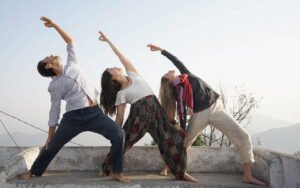
What Are The Depression Symptoms?
Some of the symptoms of depression, that you will notice more often are given here:
- You may notice the depressed individual feeling hopeless or sad. Moreover, being worried all the time, sometimes related to depressive disorders as well.
- A depressed person will not enjoy any kind of activity. It is the result of a sense of worthlessness. And, this feeling is often continuous in nature.
- Moreover, you will find depressed individuals getting irritated and frustrated very easily. For normal people, the feeling is of temporary nature. However, for depressed individuals, the feeling can be continuous.
- If you are depressed, you will not be able to sleep well. Some thing or the other will keep nagging you. Fatigue is also another facet here. You will constantly feel tired.
- Depressed individuals cannot remember things and they are also unable to concentrate. Completing mundane tasks can also seem like a huge pressure.
- Depressed individuals also think about self-hurt. You will find such people displaying suicidal tendencies.
Before you can think about treatment options, it is important to diagnose whether or not, a person is depressed or not. Sometimes, sadness can also be confused with depression. Everyone feels sad once in a while.
However, a person who is clinically depressed, will show the symptoms for a longer period of time. You have to go for counselling, if you feel sad for longer periods than expected. If you have a family history of depression, it is more likely that you will be affected by the same. So, a quick diagnosis is the key to management of depression.
Treatment For Depression
Depression is a serious illness, which can be treated. Most therapists and doctors suggest the patient to get regular exercise, sleep, and engage in community activities. The key to treating depression, is to shift the thoughts that cause negativity. This is self-help, to be precise.
Counselling and psychotherapy are treatment modalities that have shown good results in the past. A mental health counsellor or therapist can indulge in talk therapy to bring out the hidden thoughts of a patient. Some therapies are of shorter duration and some are of longer duration.
The third modality is the use of anti-depressants. Psychiatrists generally suggest such medicine to patients with serious depressive symptoms. They can take weeks to months, to show the desired effects.
Alternative therapies like Yoga, Reiki, Ayurveda, and Panchakarma has also come to occupy an important position in the treatment of such a disease. You should read about Yoga Therapy in detail here. It has tremendous benefits, when done under proper guidance.
How Yoga Can Help Your Depression
Now, let us delve into the possible solutions of depression, that can be derived from yogic practices. Recent studies have already suggested that yoga can possibly offer a cure for stress, anxiety, depression, and also tends to improve energy. Yoga is a physical exercise apparently.
However, it has a deeper significance on the day-to-day livelihood of all concerned. Yoga not only involves asanas, but it also involves various breathing practices, and meditation.
Many people practice yoga to manage various mental conditions, such as stress, anxiety, as well as depression. Moreover, it is also known to alleviate long-term chronic pain. Yoga meditation mainly helps an individual by helping them focus, on the good. Thus, the focussed behaviour in the course of time, helps to strengthen the connection between the body and the mind.
Yoga also helps in increasing the production of serotonin. It is important for the treatment of depression. After a session of yoga, you will also find that your heart rate has increased. It also decreases the blood pressure. After some physical exercise, the body feels rejuvenated as well.
Here are a few yoga poses and practices that will help you to get rid of your depressive symptoms.
Balasana
It is the easiest of all, and beginners can also do this. You simply have to emulate the posture of a child. Sit on your hips, as in Vajrasana, where your hips rest on them. Slowly bed forward, and lower your head toward the ground. Your forehead should touch the ground in the process. You have to keep both your arms by the side of the body, with the hands on the floor, palms facing upwards. You need to bring your chest in contact with the thighs. Hold the position, and then slowly come back to your normal posture. This asana provides a deep sense of relaxation to the back. It also calms the nervous system.
Halasana
It is also known as the plough pose. It is a lying down pose, in which you have to start by lifting both your legs slowly. All this while, ensure to keep your hands by your sides, with palms facing down. You need to use your abdominal muscles to sweep the legs at 180-degree across the top of your body and bring the toes in contact with the floor. Inhale and exhale normally, while doing this.
If you have difficulty, in lifting the lower part of the body, then you can also use your hands for the same. You have to place your back at an angle of 90-degree to the floor. Hold this pose, and breathe steadily. After a minute or so, you can bring them back to the normal position. It reduces stress and fatigue and also acts as a shoulder and chest opener. Moreover, it also strengthens the immune system of the body.
Savasana
Also referred to as the corpse pose, you have to emulate a dead body. Most yogis do this after a session of yoga, to relax the body after all the bends and contortions. You can lie flat on the ground. Close the eyes. The legs should be out stretched and a foot, or so apart, with the toes pointing towards the sides. You should place both the arms on the sides of the body, and keep your palms open pointing upwards. Slowly relax your body, and free your mind. This is an excellent remedy for stress and anxiety. It also rejuvenates the entire body.
Setu Bandhasana
Also called bridge pose, as the body resembles a bridge, when you do the asana. You have to start by lying flat on the floor. Fold your knees and keep the feet, hip-width apart. The arms should be placed by the side of the body. While inhaling slowly, lift your back from the ground. The shoulders should only be touching the floor, apart from the feet firmly grounded. Bring your chin to touch your chest. In this pose, you will only be supporting your body or propping it up, on your feet, shoulders, and the arms on either side of the body. Breathe normally while holding this pose. You can then exhale and release.
This asana is an extremely beneficial asana, for the body. It strengthens the back muscles, and relieves pain from the back. Moreover, it also calms the brain and releases anxiety. Your lungs also get a boost and so does the reproductive organs. It provides all-around therapy to the body.
If you thought that only asanas, can prove to be useful in depression, think again. Pranayama or breath control exercises are equally good. Here are a few to help you to control depression.
Bhramari Pranayama
You will also hear the term Humming Bee breath, associated with this pranayama. It is a calming breath practice, that has the power to soothe your mind and senses. Moreover, Bhramari Pranayama connects one to the truest inner nature. You have to produce a humming sound at the back of your throat.
That is why the name ‘Bhramari Pranayama’ is just apt. As with any other meditative posture, you need to sit in a quiet, and well-ventilated place. Sit straight, with your eyes closed, and smile on your face. Place the index finger on your ears. There is a cartilage on the outer ear, where you can place the index finger. Take a deep breath and then press the cartilage, while exhaling out. You will be making the sound of the humming bee around this time. A high-pitched sound is always better than a low-pitched one. Continue with the same pattern, thrice or four times.
Nadi Shodhana
It is a type of Alternate Nostril breathing. After you have seated yourself comfortably in a calm and well-ventilated place, you have to relax, with your left hand placed upon your lap. Take the right hand towards your nose. You have to use the thumb and ring fingers actively, to close the nostril, on either side. The remining two fingers, namely the index finger and the middle finger rests on the centre of the eyebrow for support. Close the right nostril with your right thumb, and breathe in through the left nostril.
Thereafter, close the left nostril, with the ring finger, and exhale through the right. You have to hold the breath in between for some time. After you have exhaled through the right, you need to again inhale through the right. Close the right nostril again and keep both nostrils shut, while maintaining ‘Kumbhaka’. Do this for 5-10 cycles. You can practice this daily, and after you have done so for some time, you will sense a feeling of relaxation and reduced stress. This practice removes toxins from the system. It also calms the nervous system and improves your ability to focus.
Studies have revealed that yoga or alternative healing modalities like meditation can provide you with relief from depression. It is a gentle modality that consists of meditation, kriyas, and physical movements. The actions often affect the nerves, which are the base of most problems. You can go for any style of yoga, as each one has different implications on the self.
However, no two depressed individuals will be accepting of the modalities in the same manner. So, you have to check how compatible one is. Many therapists use medication, counselling, and yoga to alleviate the symptoms. It is a combination of all these that mostly work.
Read More: Everything You Need to Know About Kundalini Yoga Teacher Training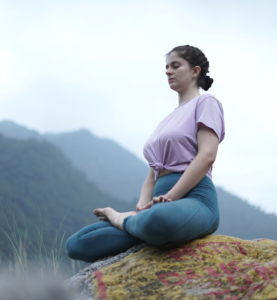
Deepen Your Yoga Practice with Hari Om Yoga Vidya School
Located in the heart of Rishikesh, Hari Om Yoga Vidya School is a place where ancient yogic wisdom meets modern teaching techniques. As a top yoga school in Rishikesh, we are committed to providing authentic, immersive yoga education in a peaceful, spiritual setting. Recognized as one of the best yoga schools in Rishikesh, we offer structured training programs designed to help you evolve in your practice, whether you are a beginner or an experienced yogi.
If you’re searching for a yoga school in Rishikesh that focuses on holistic learning, experienced teachers, and a supportive community, look no further!
Explore Our Yoga Teacher Training & Retreats
At Hari Om Yoga Vidya School, we offer a range of courses tailored for different levels of practitioners:
✅ 100-Hour Yoga Teacher Training in Rishikesh – A foundational course for those looking to begin their yoga journey.
✅ 200-Hour Yoga Teacher Training in Rishikesh – An internationally recognized certification for aspiring yoga teachers.
✅ 300-Hour Yoga Teacher Training in Rishikesh – Advanced training to deepen your practice and refine your teaching skills.
✅ 7-Day Yoga Retreat in Rishikesh – A rejuvenating escape into yoga, meditation, and self-discovery.
✅ 10-Day Yoga Retreats in Rishikesh – A transformative experience that blends yoga, relaxation, and Himalayan serenity.
Join us for a life-changing experience and become part of our global yoga family! 🌿✨

